Introduction
Thanks very much for joining me today. We are going to be looking at wheelchair seating, specifically at seating for someone who is a hands-free sitter. We will also be discussing what a hands-free sitter is as compared to other categories of clients that require wheelchair seating. We are also going to review clinical guidelines and things we need to keep in mind when working with the hands-free sitter. Lastly, we will spend a bit of time on a case study.
This course is part of a series of courses through occupationaltherapy.com that focuses on advanced seating and mobility information. Some people attending this webinar may be pursuing their Seating and Mobility Specialist certification or SMS. The examination that is a part of the SMS certification process includes in-depth case studies. As a result, I will be attempting to provide a case study with a number of questions as part of the post-tests that are based on that to help people prepare not only to provide better seating and mobility services to the clients that we work but also to prepare for that examination.
Seating and Wheeled Mobility
- Every mobility base includes some form of seating
- Primary supports include a seat, back, armrests, and footrests
- Seating interventions vary tremendously depending on the client age, diagnosis, prognosis, postural needs, pressure risks, etc.
Every mobility base includes some form of seating. Now that might seem rather self-apparent, but it is something that we have to be clear about to other team members and to funding sources. We are not simply recommending a wheelchair. We also have to recommend some type of seating, even if it is very basic seating on that base. There are primary supports on almost any mobility base including the weight-bearing surfaces such as the seat and the back. These are very critical. We also need to address the armrests and footrests. Not every wheelchair will include these, though most of the time these will be included and also become weight-bearing surfaces. Seating interventions from that point vary tremendously and depend on the client's age, diagnosis, prognosis, future needs, postural support needs, pressure risk, etc.
Postural Needs
- One way of looking at Wheelchair Seating is by postural support needs:
- Hands-free sitter
- Hands-dependent sitter
- Prop sitter
One way of categorizing our wheelchair seating interventions is by the amount of postural support that an individual client needs. This is regardless of their age and diagnosis. This is the amount of support this person needs to sustain an upright position during various functional tasks. We categorize this postural support by the following categories: hands-free sitter, hands-dependence sitter, and prop sitter.
Hands-free Sitter
- The person is able to lift their hands off of the surface without changing the position of the trunk
- Can also shift weight to the side and return to a midline position
- Good trunk control
A hands-free sitter is someone who is able to lift their hands off of a surface they are sitting on as shown in Figure 1.
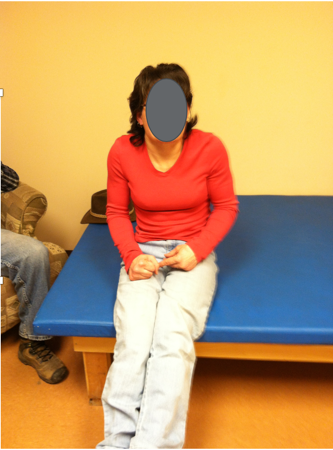
Figure 1. Example of a hands-free sitter.
In this case, this young woman is able to lift her hands off of the surface of the mat table, and her trunk position does not change. She is not falling over, slumping, or collapsing to one side when moving her hands off the surface of the mat. A hands-free sitter can shift their weight (maybe not a huge amount) to one side and return to midline without assistance. This person, in general, has fairly good trunk control. Yet, this person may still require wheelchair seating, primarily because this person is not ambulatory or perhaps not efficient or safe in ambulation.
Hands-dependent Sitter
- This person uses one or both hands on a surface to maintain sitting balance
- If hands are lifted, the trunk will collapse
We are going to discuss the hands-dependent sitter in another course where we will have the entire time to dedicate to this level of postural support. But, keep in mind that a hands-dependent sitter needs to use one or both hands on the surface they are sitting on in order to maintain upright sitting. If they lift their hand, their trunk will collapse. This young man here can sit fairly well with just support from his hands as noted in Figure 2.

Figure 2. Example of a hands-dependent sitter.
Prop Sitter
- This person cannot maintain sitting, even with the support of both arms
- External support is required
A prop sitter is a person who cannot maintain sitting, even with the support of both arms. In the case of this young man here, he is unable to reach down to the surface of the mat table to support himself (Figure 3).
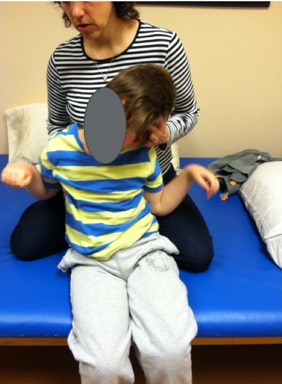
Figure 3. Example of a prop sitter.
He is going to require more significant, external support to maintain an upright position.
The Hands-free Sitter Goals
Maximize reach without loss of position
Maximize function
Prevent the development of asymmetrical postures
- Mitigate pressure issues
We want to maximize reach without loss of position. This is someone who has fairly good trunk control, but perhaps if they have to reach overhead into a kitchen cabinet or to the side to grab something off of a table, they may lose their balance. We want to make sure this person can reach as far as they need to meet their functional task without losing their trunk position or trunk control. We also want to prevent the development of asymmetrical postures. We may see a client who positioned fairly well at this point as a result of our interventions, but we need to always keep in mind our long term goals. Are we seeing postural tendencies that might lead to the development of some asymmetries in the future? What can we do now, when looking at this person's wheelchair seating, to help minimize future undesired consequences? And then finally, we need to mitigate any pressure issues. The hands-free sitter may have pretty good trunk control and not need significant postural support needs, but they may be at risk of developing pressure due to their diagnoses. Sometimes, these clients lack sensation and are at higher risk of developing pressure issues. For example, many people with a lower level spinal cord injury may fall into the hands-free sitter category.
The Hands-free Sitter Clinical Guidelines and Assessment
When we are doing an assessment of the hands-free sitter, we need to look at the following areas.
- Observation of seated posture
- Sitting balance
- Range of motion
- Muscle strength
- Sensory status
Observation of Seated Posture
- Observe the client in their current seat to ensure that the pelvis is in neutral, the trunk and head are aligned and upright, and the lower extremities are aligned with the hips.
- Even if a client can sit unsupported, their posture may not be ideal, potentially impacting stability and function.
First, we observe their seated posture.
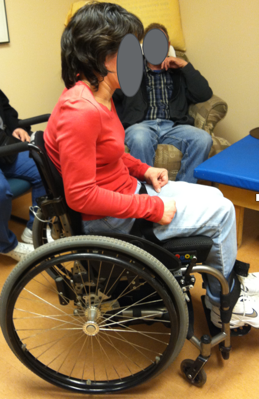
Figure 4. Observation of seated posture.
I do a lot of wheelchair seating and have for a number of years. I have to admit that sometimes it looks like I am not really doing anything because I am sitting back and observing. I may not have my hands on the client, but I am watching carefully to see how are they seated. If this person already has a seating system, what is their posture? Is their pelvis in neutral? If it is not, I need to document where it tends to be. Are the trunk and head aligned and upright? Are the lower extremities aligned with the hips? Anything that I see that is not quite symmetrical, I need to document because that might be something that needs to be corrected. Sometimes, it is not possible to correct. Even if the client can sit unsupported, their posture may not be ideal. As a result, this can impact their stability and subsequent function, and we may need to add some additional postural support.
Sitting Balance
- Static sitting balance
- Dynamic sitting balance
- During functional activities
- i.e. self-propulsion, ability to stay upright over rough terrain or inclines, reach
- Over time
- During functional activities
- Assessment tool: Boswell-Ruys et al., 2009
We need to look at our client's static and dynamic sitting balance. I see some clients who can sit on the edge of a mat table or in their very minimal seating system and look like they have pretty decent trunk control. But, if the client needs to do something functional, they may lose their trunk control. Thus, it is important to observe their sitting balance when they start doing things. This can include self-propulsion of the wheelchair while maintaining an upright posture. An example of a difficult activity is propelling over rough terrain or even something as simple as potholes in the sidewalk. Another activity is propelling up and down slopes like a ramp. It is also important to look at their dynamic sitting balance over time. Their seating balance may deteriorate due to fatigue or muscle weakness throughout the day. Then, we need to make sure the seating system, is providing adequate support. There is a nice assessment tool available that we will look at that when we get to our references. It can be used to assess sitting balance in wheelchair users.
Range of Motion
- Range of motion of the hip joints and flexibility of the lumbar spine are critical in maintaining an upright pelvis.
- Adequate hip flexion is required for hands-free sitting.
Range of motion, especially at the hip joints, is really important because that is going to determine the client's ability to sit with an upright pelvis.

Figure 5. Example of range of motion assessment position.
In one of the other courses in this series, I review a mat assessment and the important areas to measure. If you missed that one, I would encourage you to check it out. In particular, we looked at hip flexion and discussed how that impacts someone's ability to sit upright. We also discussed how to measure the hip angle? In particular, we need to look at the range of motion of the hip joints and the flexibility of the lumbar spine to make sure the client can be seated at the recommended upright hip angle.
Muscle Strength
We need to look at muscle strength as well. We may not need to do a formal manual muscle test, but we need to ensure that this client has adequate muscle strength for both hands-free sitting as well as sitting over time and over varied terrain.
Sensory Status
- Impaired proprioceptive awareness impacts the control of movement and position sense.
- Lack of deep pressure and pain sensation increases pressure injury risk.
If the client has impaired proprioceptive awareness, this is also going to impact their ability to sense where their position is to determine that they are in an optimal seated position and impact the control of their movement as well.
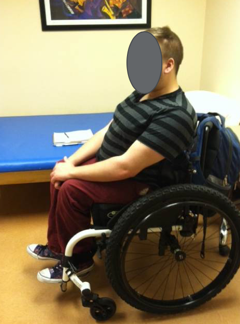
Figure 6. Example of a client with sensory issues.
If the client lacks deep pressure and or pain sensation, that is going to increase their pressure injury risk. Bodily sensations tell us when it is time to move and restore blood flow to compressed tissues. I am going to be mentioning this a few times. We have another course in this seating series that addresses pressure.
The Hands-free Sitter Clinical Guidelines and Functional Activities
We also need to look at functional guidelines.
- Stability
- Functional Reach
- Transfers
Stability
Is this person stable enough for the activities that they need to do?
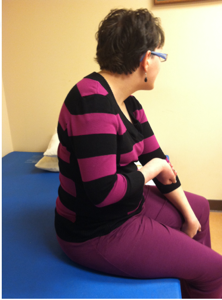
Figure 7. Example of sitting balance at the edge of the mat.
All of us pull in a certain amount of stability, for the activities that we do.
Functional Reach
- Reach is dependent on stability, optimal proximal support, upper extremity strength, and ROM.
- Smaller mobility base footprint allows the client to get closer to the target.
Our clients may need more support to do certain activities.
People have a certain amount of intrinsic stability that is provided by the balancing of different muscle groups. For example, I am in a seated position in a chair. I am balancing my flexors and extensors in my trunk to maintain an upright position. If the client is lacking that intrinsic stability, the seating system provides extrinsic stability for them through those primary support surfaces. These are the seat and the back as well as secondary support services that might be needed for lateral trunk support. Examples of secondary supports are head supports, pelvic belts, and anterior trunk supports.
Again, stability is very important for functional activities. If a client is going to be functional, they need to be able to work off that core stability. And, if they do not have it intrinsically, they need it to be applied extrinsically. This is very important with seating and mobility, and I am a big fan of finding that stability for clients. Stability does not always mean restricting movement. Rather, it means finding a place of stability for an individual so they can be as functional as possible. Most hand-free sitters have the ability to reach out as a part of their function. Whereas, some other categories of sitters, particularly a prop sitter, is not able to reach out beyond their seated posture. Functional reach is very important to our hands-free sitters. Again, to have optimal proximal support, upper extremity strength, and active range of motion, this stability is paramount. Perhaps from where you are sitting right now, you should able to reach out and grab a cup of coffee or whatever your choice of beverage is. In order to disassociate your upper extremity from your trunk, you need to have that core stability. The client also has to have adequate strength and active range. Keep in mind that the smaller the mobility base footprint (the less space that wheelchair base takes) the closer the client can get to their target. This certainly helps with active reach as well.
Transfers
- Many people with good sitting balance can perform an independent transfer.
- The seating system may need to accommodate the type of transfer.
- Seat to floor height
- Lateral obstruction/stability for side to side or sliding board transfers
Many people, who are hands-free sitters, can perform an independent transfer so it is important that the seating system accommodates this. There are two things to keep in mind. First is the seat to floor height. If my seat the floor height is really low and I need to transfer up to my bed, that is going to be a very difficult transfer. Level transfers are the most optimal. Transferring downhill can be easier for a person, but eventually, they have to transfer back up again. Thus, it is important to get those surfaces as close to the same height as possible. With this, you have to also adjust for the height of the seat. Many hands-free sitters use cushions that are low profile and do not have very high height, while others use cushions that are high and can impact transfers.
The shape of the cushion is the second area. Some cushions may have very aggressive lateral sides or a medial build up as noted in Figure 8.

Figure 8. Example of a contoured cushion.
